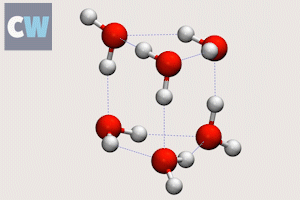Physical chemistry – Page 43
-
 Research
ResearchIron-rich silicate plays cosmic matchmaker
Findings could help explain abundance of molecular hydrogen in interstellar space
-

-

-
 Research
ResearchScientists claim to have seen ‘new state’ of water
Scepticism that water molecules with delocalised protons can be described as an unknown phase of water
-
 Opinion
OpinionHoming pigeons should thank quantum chemistry
Philip Ball asks whether quantum biology holds the secret to how birds navigate
-
 Careers
CareersMarine paint innovation
Nina Notman visits the AkzoNobel site in Gateshead and meets the scientists designing the next generation of environmentally-friendly marine paints
-
 Research
ResearchWater hydrogen bonds tunnel in tandem
Cog-like interactions seen between molecules in ‘smallest droplet’ of water
-
 Research
ResearchBonding accurately predicted in diatomics by new scheme
Hopes that simple theoretical framework can be extended to tackle polyatomic molecules
-
 Research
ResearchNew type of hydrogen bond discovered
First non-classical hydrogen bond involving boron–hydrogen to π-system observed
-
 Research
ResearchMolecular surgery stitches up water dimer in fullerene cage
First isolation of dimer to aid fundamental studies of hydrogen bonding
-
 Research
ResearchSlippery slope to harvesting water from air
Surface draws inspiration from a beetle, cactus and carnivorous plant to capture condensation 10 times better than state-of-the-art materials
-
 Research
ResearchRewriting the textbooks with a pinch of salt
Chlorine atoms in the –2 oxidation state, and other high pressure-induced oddities, predicted using new model
-
 Research
ResearchGroup 6 diatomic bonding is all relative
Relativistic effects may help to explain break from periodicity
-
 Research
ResearchElectron work functions look tough
Surface property calculations provide a link between the electron work function and toughness of transition metals
-
 Opinion
OpinionWeighty decisions
Juris Meija explains why a small change to the atomic weight of an element can make a huge difference to science
-
 Feature
FeatureThe bonds that bind
Mike Sutton plots the journey of the scientists who solved the riddle of chemical bonding
-
 Research
ResearchFast skating forces ice to feel the heat
Researcher argues your skating speed will dictate the slipperiness of ice
-
 Research
ResearchGetting the measure of transition states
Previously impossible to monitor properties of transition states found hidden in vibration spectra
-
 Research
ResearchSuper-repellent coating ready in seconds
Non-stick polymer coating is simple to apply and repels oil, water and alcohol
-
 Research
ResearchTrampolining droplets raise hopes for ice-shedding surfaces
Mystery of bouncing droplets that apparently defy the laws of physics unravelled